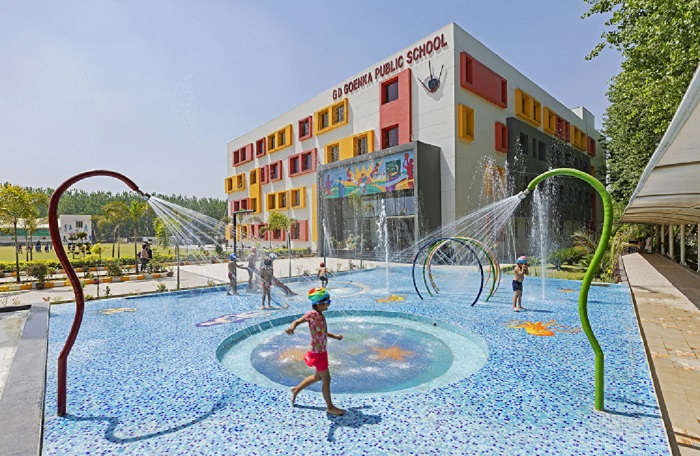“Embarking on the Frontiers of Architectural Innovation: Unveiling Cutting-Edge Trends and Technologies. Join us as we delve into the latest advancements shaping the industry, from sustainable practices and biophilic design to technological integration and cultural influences. Discover the diverse approaches architects employ to craft spaces that inspire, enrich, and endure.”
What eco-friendly design strategies or materials do you incorporate to ensure sustainability in your architectural projects?
Our projects prioritise sustainability by incorporating eco-friendly design strategies and materials. This includes utilising passive climate strategies such as efficient ventilation systems and natural lighting to reduce energy consumption. Thoughtful consideration of the orientation of the building helps reduce heat gain and maximise natural ventilation.We also emphasise using locally sourced and recycled materials to minimise environmental impact. Additionally, we integrate green spaces and landscaping to promote biodiversity and mitigate the urban heat island effect. By adopting these approaches, we aim to create environmentally responsible buildings and contribute positively to their surroundings.

What innovative design solutions do you employ to optimise space and functionality in compact living environments?
Innovative design solutions are paramount to optimising space and functionality in compact environments. Integrating multi-functional furniture, employing modular design elements, and maximising vertical storage help maximise available space while maintaining flexibility and adaptability. In one of our projects, GD Goenka Junior School in New
Delhi, similar strategies are adopted to create a dynamic and engaging environment despite the space constraints. Incorporating foldable features, smart organisation, and maximising natural light enhance efficiency and comfort. Neutral colours and minimalistic design promote a conducive atmosphere for learning.
In what ways does biophilic design enhance the overall ambiance and well-being of occupants in architectural spaces?
At VGA, we firmly believe in the transformative power of biophilic design to enhance the well-being of occupants in architectural spaces. By integrating natural elements into our projects, such as ample natural light, greenery, and views of nature, we create environments that prioritise the users’ mental and physical well-being. In schools particularly, nature is utilised not only to enhance the learning environment but also to instil respect for the environment from a young age, making students conscious of their surroundings and fostering a sense of responsibility towards the natural world. We believe that biophilic design not only improves the physical health of occupants by enhancing air quality and encouraging movement but also fosters mental well-being by reducing stress and technology has promoted positive emotions. Our commitment to biophilic design ensures that our projects provide spaces that feel welcoming, comfortable, and harmonious, ultimately enriching the lives of those who inhabit them.
How has technological integration transformed the way architects and designers approach their projects?
Technological integration has revolutionised how architects and designers approach their projects. It enhances efficiency, fosters innovation, and streamlines coordination across various aspects of the built environment, from ventilation to sustainability. Collaborating with engineers, consultants, and project management consultants is now smoother, thanks to advanced technology. Tools like VR enable architects to visualise and even interact with buildings before construction, empowering them with unprecedented capabilities to refine and optimise their designs.
How do cultural elements influence your design process, and how do you incorporate them into your architectural creations?
At VGA, cultural elements inspire our design process. Our project, Amity University in Kolkata, adapts the concept of addas, fostering interdisciplinary interaction at the campus core. Drawing from local motifs and architectural styles, we create a sense of place and identity, enriching the built environment and fostering a deeper connection with the surroundings.
How do colour palettes influence the ambiance and emotional response within interior spaces?
Colour palettes wield immense power in shaping the ambience and emotional responses within interior spaces. In one of our projects, GD Goenka Public School in Rudrapur, Uttarakhand, white hues in academic wings create a bright, clean atmosphere, while earthy pink tones in the open-air theatre foster warmth and sociability. Vibrant shades like coral and chrome yellow on the facade add dynamism and playfulness. The chosen colour scheme enhances the atmosphere, influencing students’ emotions and creating conducive learning and socialising environments. Additionally, the indoor colour scheme aligns seamlessly with the outdoor facade, maintaining consistency and reinforcing the desired ambiance throughout the school premises.
How is AI and IoT transforming the concept of smart homes, and what impact does it have on user convenience and efficiency?
AI and IoT are transforming smart homes, enhancing user convenience and efficiency. Architects now design residences with AI-powered systems that automate tasks like lighting, temperature control, and security based on user preferences, allowing maximum personalisation. IoT devices enable seamless connectivity between different systems, optimising energy consumption. These advancements offer unprecedented comfort in modern living spaces.


